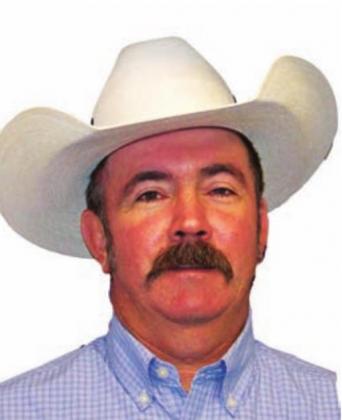Small Grain Planting Time
Time passes quickly and while it may not seem like it, now is the time to be planting or getting ready to plant small grains for forage production.
As always, I encourage you to really do some figuring to see if small grains will pay there way for you this year. Cost for everything is extremely high this year and small grains are certainly no exception.
Pest and potential for drought conditions will certainly increase your risk this year as well.
However, if you are a farmer, you farm and if you need a high quality forage for stocker calves or lactating cattle there is not much better than small grains.
You do still have plenty time to get your small grains in the ground, but your planting date can make a difference in the amount of forage produced throughout the season.
Many factors can determine when you are actually able to get out and plant, but research indicates that getting seed in the ground as close to the middle of September as possible will not only provide a better chance for early grazing, but also a higher forage total for the whole season.
Depending on who you talk to proper seeding rates can vary considerably. Some research indicates that forage yield was similar at 30, 60, 90 and 120 pounds seeded per acre.
However, I would not recommend going below 60 pounds and would suggest 90 pounds per acre or at least somewhere between 60 and 90 pounds. Seed quality, seed treatments and precision equipment have allowed us to drop our seeding rates.
However, a little extra seed can make all the difference, if due to weather or some other unforeseen event you do not get ideal germination. Almost always thicker is better for grazing.
Nutrient management is of course as important for winter forage as it is for summer forage. If you have been using soil samples as a part of your yearly management, then you will know what the nutrient levels are in your soil and what type of starter fertilizer you will need for your winter forage. A spring application of 60 to 90 lbs. of nitrogen will really increase your forage. In some grain research from the 2012 season, 60 lbs. of nitrogen was the most cost efficient, this should be very close to the same for forage.
How many cattle you are grazing are your expected silage yields and the cost of nitrogen will ultimately determine the amount of nitrogen you apply.
Just like the weather insects and disease always present challenges.
Your first challenge will be to keep the armyworms and grasshoppers at bay. Both of these pests are going to be an issue for small grains right up until we get a frost.
On those September planted fields you will want to be very diligent in scouting for armyworms. Rust is always a threat to wheat and oats and even triticale.
If you are grazing closely you will probably keep it grazed out, but if you are planning to cut for silage you will want to consider the use of a fungicide.
There are good fungicides available and the costs are low for the insurance they provide. Using varieties with good rust resistance is a good idea, but not fool proof. The rust fungus can change from one year to the next, making resistant varieties no longer resistant.
Finally, what to plant? There are several choices of small grains; wheat, oats, rye, triticale and barley, and that does not even include the ryegrasses.
Within each of these there are lots of different variety selections. Wheat provides the most flexibility; you can use it for forage or as a dual purpose crop, or for grain only. Wheat has good cold tolerance and there are many good varieties to choose from. Triticale is a cross between rye and wheat. It typically has higher yields than wheat, but the quality can be lower. Be sure to select a variety or blend of varieties with cold hardiness.
Rye is the most cold hardy of all the small grains, it is the best winter producer, but it matures early and quality decreases in the spring. It also has very good disease resistance. Oats make excellent high quality forage, but winterkill can be an issue.
There are now oat varieties that offer better cold hardiness. Oats can be susceptible to some rust problems. Ryegrass is not a small grain, but a cool season grass. Ryegrass has the capability to produce very high forage yields of quality forage.
Typically ryegrass will continue to produce through the spring and as late as early June, but depending on the severity of the winter, it does not normally provide a lot of early grazing.
With all the hay made early this season, you may not need as much winter pasture as you have in some years. However, due to the less than favorable harvesting conditions early in the season much of the hay produced may be of moderate quality at best. Winter pasture could be the answer to help fill that quality gap.

